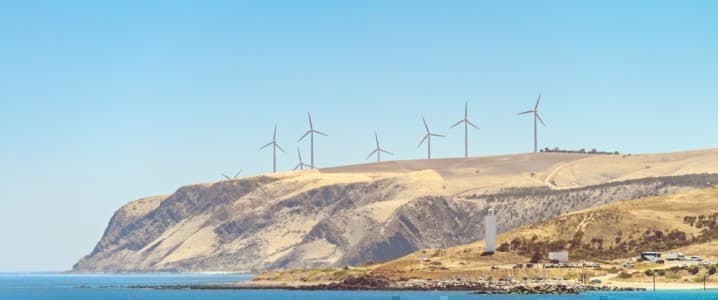Australia, the source of much of Asia’s coal supply, is expanding its energy interests with high hopes for a range of major renewable energy projects. The government has already approved several wind and solar power operations and expects Australia to become a major green hydrogen hub in the next decade. And now the state of Queensland will become home to a SuperGrid, powered by renewables.
Despite continuing to rely heavily on revenues from fossil fuels, Australia has announced a range of ambitious climate pledges. In 2022, the government announced the target of generating 80 percent of its electricity from renewable energy by 2035. It also expects to end its reliance on coal generation for power by this time. Australia hopes to achieve net-zero caron emissions by 2050, cutting its methane emissions by at least 30 percent by 2030.
In September 2022, the Australian government published its Queensland SuperGrid Infrastructure Blueprint, aimed at decarbonising the state’s electricity system. The blueprint includes the target of 50 percent renewable energy for Queensland by 2030, support for the national aim of a 30 percent emissions reduction from 2005 levels, the provision of competitively priced energy, and transforming coal plants into renewable energy sites.
This month, the Queensland government announced it had identified 12 renewable energy zones across the state that will be awarded the bulk of its $62 billion green energy investment. The zones are divided into three regions, with five zones in southern Queensland, four in central and three in the north. Queensland is the biggest greenhouse gas emitter in Australia, with electricity generation contribution one-third of these emissions, making this project all the more necessary.
The Palaszczuk government aims to invest heavily in wind, solar, and pumped-hydro projects, all to be connected to the new “super grid” of renewable power, storage and transmission lines by 2035. Approximately 22 GW of new solar and wind capacity is expected to be added to the grid by 2035, an increase from the current mixed fossil fuel and renewable capacity of 16 GW. The government will consult with local communities, hold expert panels, and carry out a range of assessments for potential projects to ensure it gains the support of Queensland residents.
Mick de Brenni, Queensland’s minister for energy, renewables and hydrogen, said this this would be the biggest economic transition project the state had ever undergone. De Brenni stated “Our nation needs Queensland to succeed… There’s work to be done by governments to lead communities through a process and to develop that support for change.” He added, “We want to establish Queensland’s transition as a best-practice case study for the nation.”
The project is expected to massively boost jobs in the region, with Australia adding a wide range of renewable energy jobs, as well as construction and other related jobs. This follows a global trend for renewable energy jobs, having seen a global increase of 700,000 jobs in renewable energy in 2021. While there were fears of the energy job market faltering, following the pandemic and due to a green transition, primarily in the fossil fuel industry, many more jobs are expected to be added in the green energy sector in the coming decades.
The director of the Queensland Conservation Council, Dave Copeman, stated “It’s essential that traditional owners and communities are involved in designing their own energy future and protecting our biodiversity and rich cultural heritage.” While the CEO of the Local Government Association of Queensland, Alison Smith, said it’s only right that they benefit from their fair share of the economic and social benefits that will come from these large-scale projects.”
And it seems like the government is taking this issue seriously. Landowners in the stated are expected to get generous payments for accepting transmission lines in their back yard thanks to a new framework introduced to accelerate the green transition, with $450 million earmarked for landowners. The SuperGrid Landholder Payment Framework from the company Powerlink will provide around $300,000 a kilometre to landowners that host new transmission infrastructure. This is far higher than the amount offered to landowners in other states, such as New South Wales and Victoria. The firm is also expected to compensate landowners with properties next to the new infrastructure.
The company’s CEO, Paul Simshauser, explained that the decision on payments comes after six months of consultations with councils, agricultural groups, landowners, consumer organisations and big energy users. Powerlink hopes to construct 1,500 new transmission links. However, there could be delays in the development due to complex regulatory processes.
If carried out successfully, the Queensland SuperGrid could offer a blueprint for other states and countries to follow. The ambitious project is expected to transform the state, support a transition away from coal – on which Australia continues to rely heavily, and provide thousands of new jobs in the region. The SuperGrid will also contribute heavily to Australia’s carbon cutting targets and its overall green transition.
By Felicity Bradstock for Oilprice.com
More Top Reads From Oilprice.com:
- Europe Backs Kazakhstan's Efforts To Sidestep Russian Influence
- African Solar Panels Are Cost-Competitive With China
- Will The Bullish Momentum In Gold And Silver Markets Continue?


















